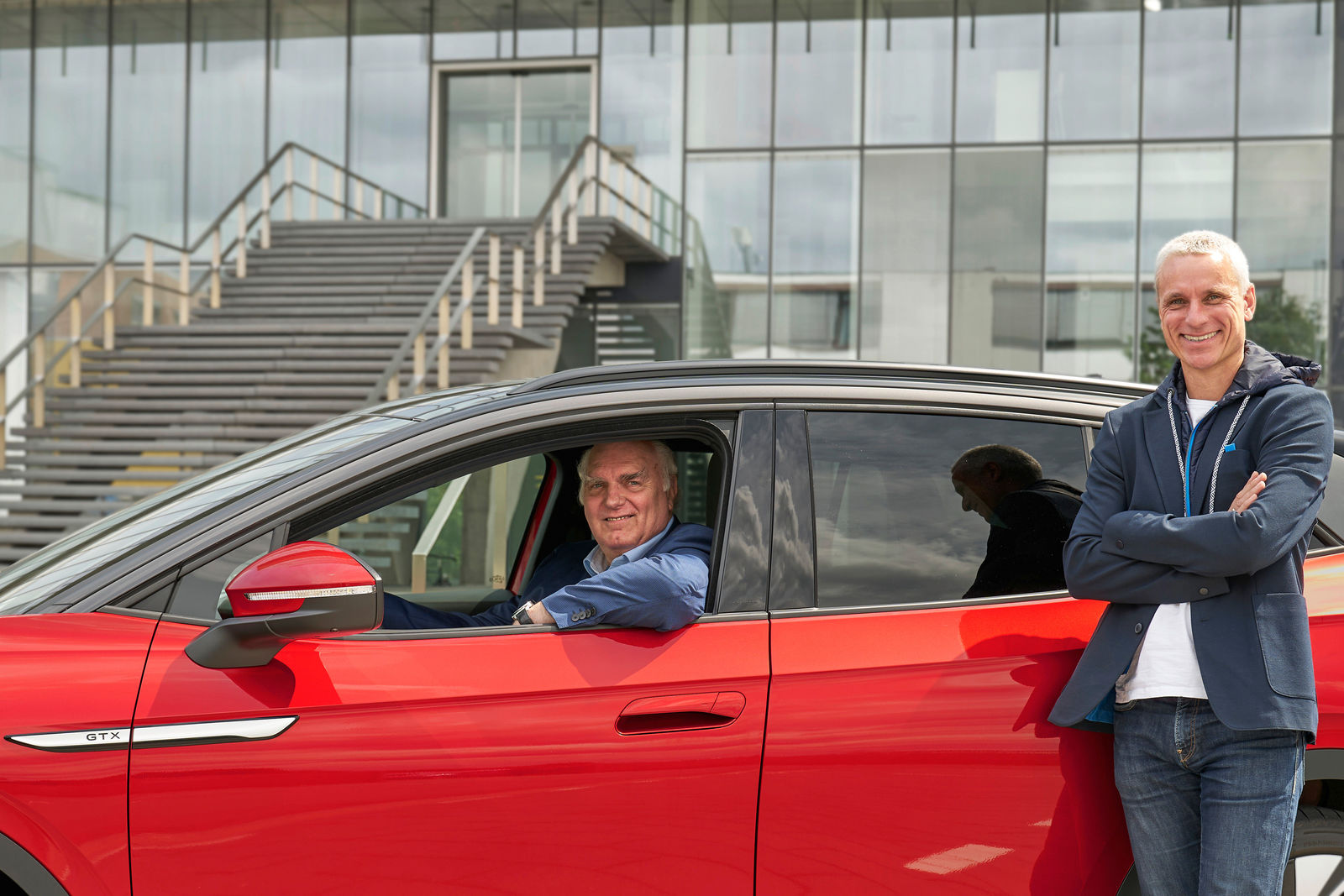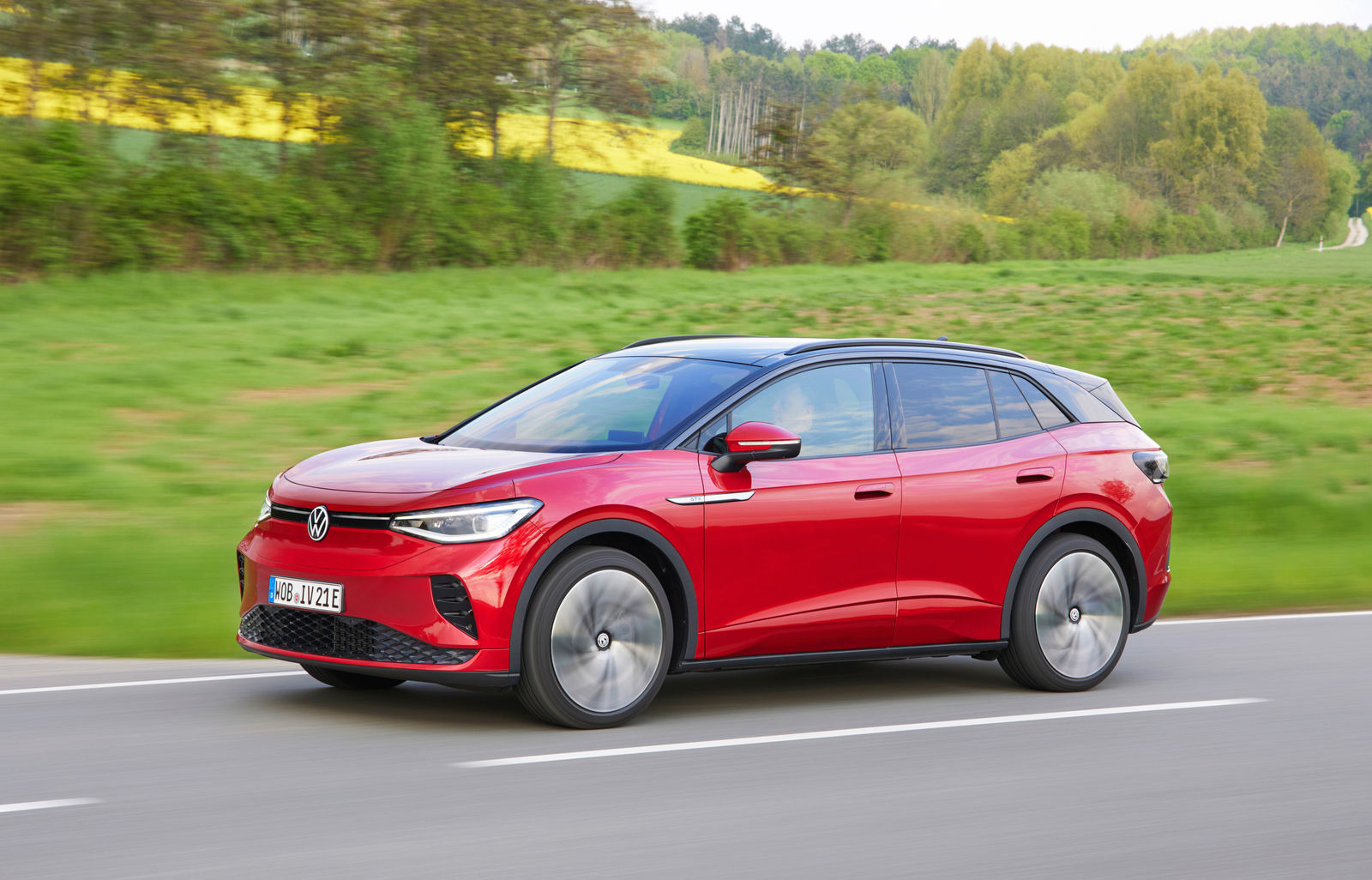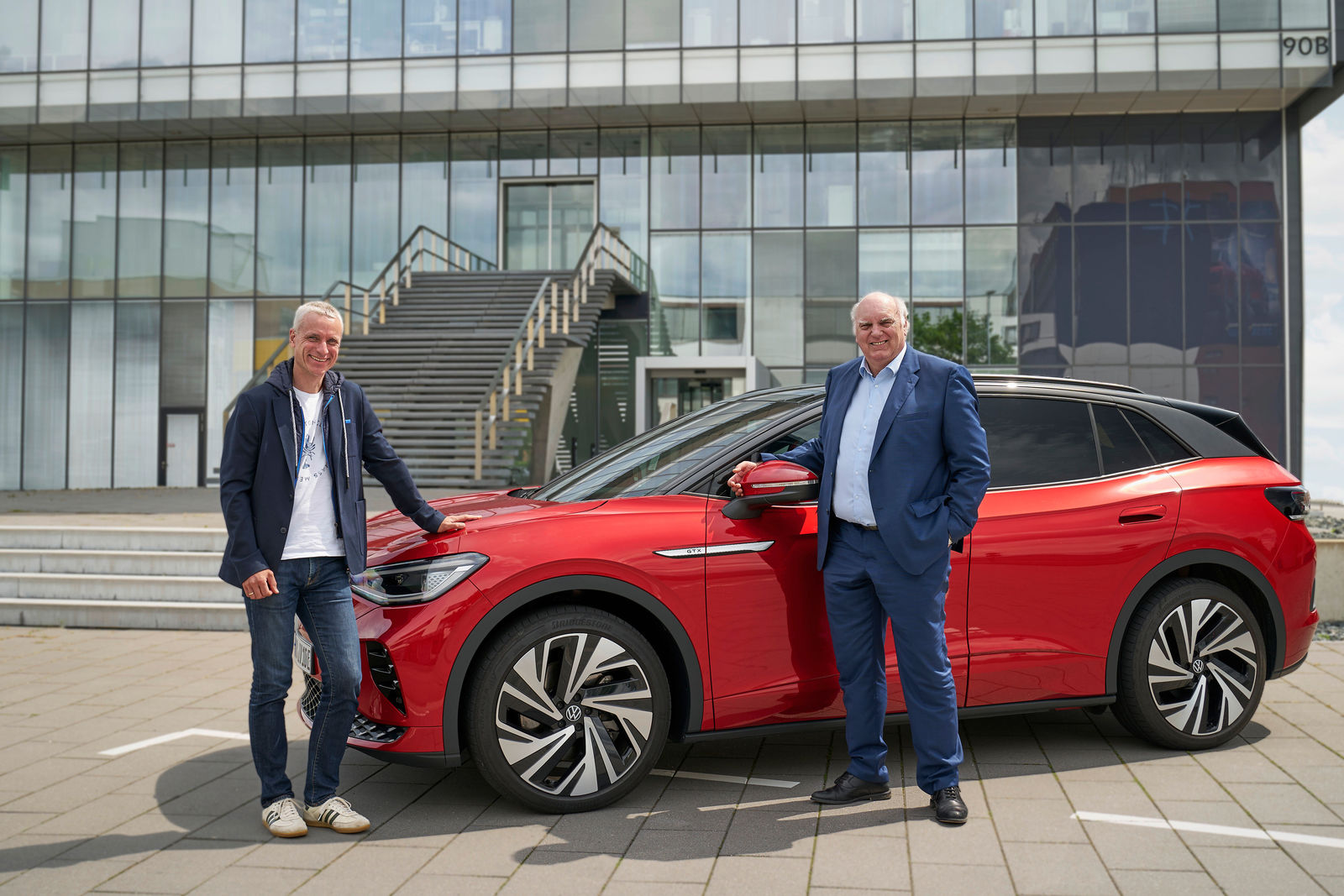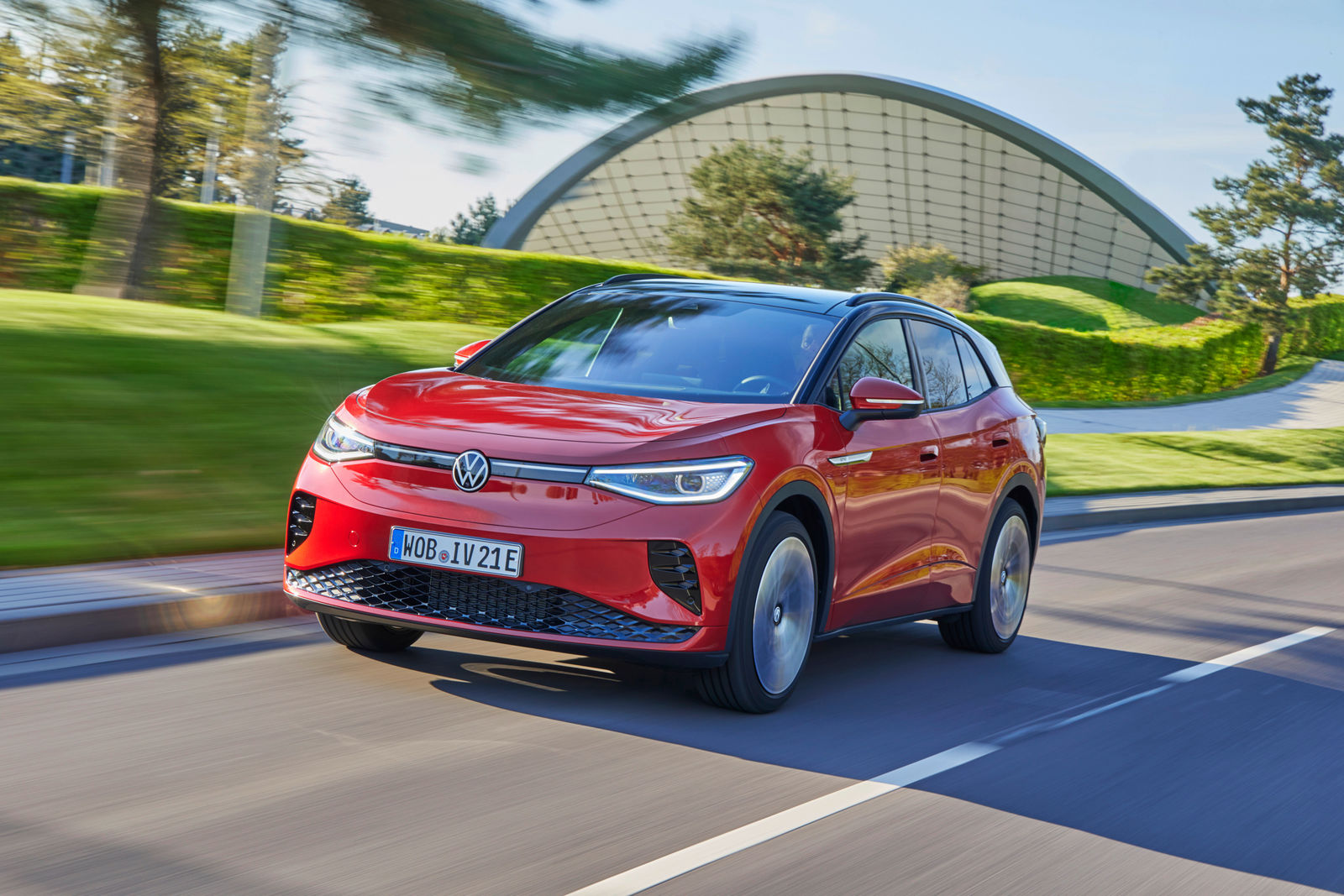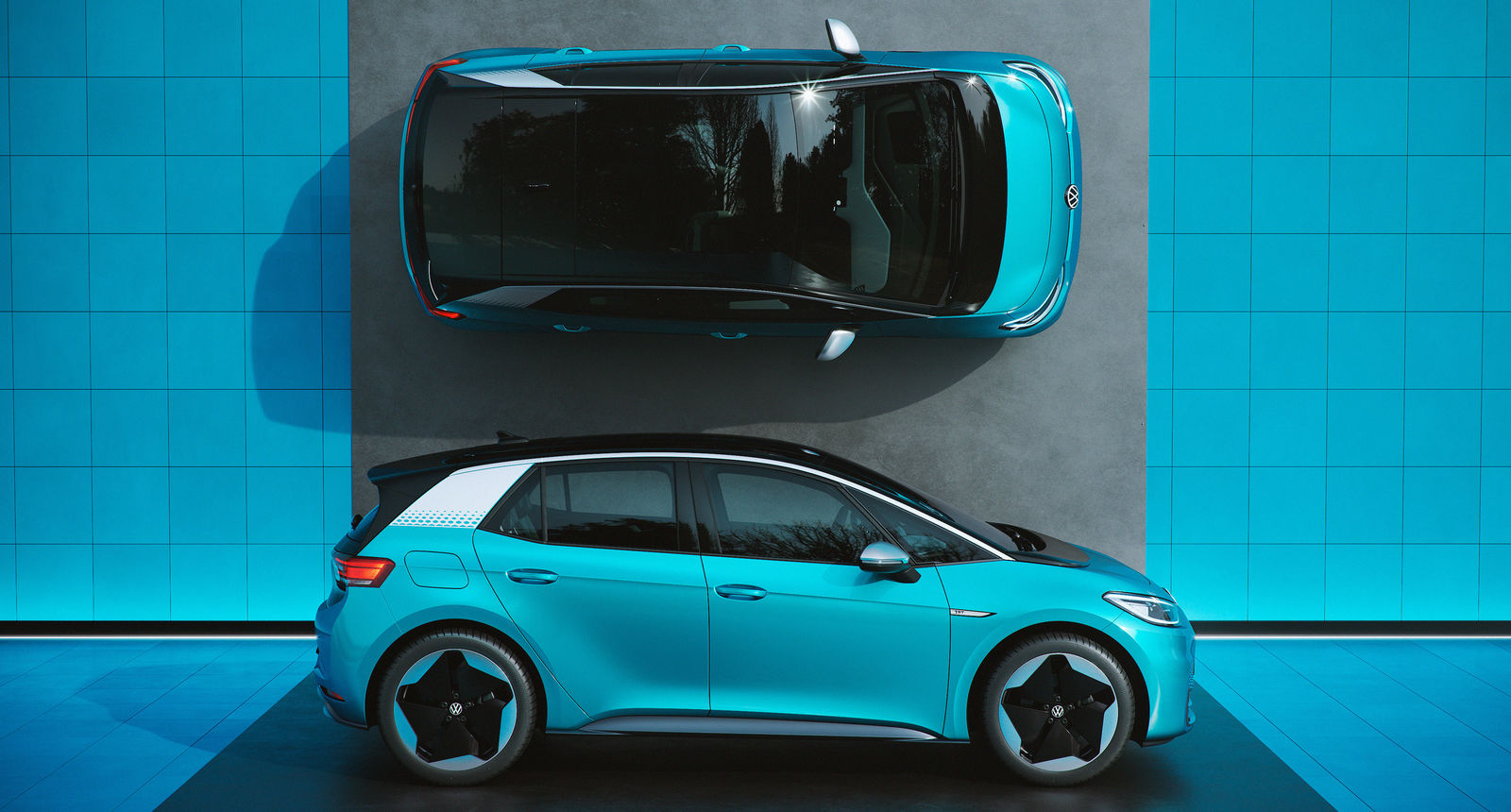Mr Obernolte, a climate-friendly SUV – isn’t that a contradiction in terms?
Obernolte: No, quite the opposite! At least not when you do it like we do: the ID.4 GTX is an all-electric SUV that doesn’t emit any exhaust fumes but offers plenty of performance. So you can drive around in a sporty, highly-efficient four-wheel drive with a clear conscience. Our customers can also have the driving experience and comfort of an SUV that many people aren’t willing to forego. And why should they?
What makes driving pleasure so special in the ID.4 GTX?
Obernolte: The great fascination of the ID.4 GTX is the silent power of the engine. When you put your foot down on the right-hand pedal, you push up to 220 kW – from a standing start, with great force and immediately, but almost without a sound. The car goes from 0 to 100 in 6.2 seconds, which is faster than the Golf GTI. And because the battery is located like a weight on the floor of the car, the ID.4 GTX has a much lower centre of gravity than conventional SUVs – giving it more contact with the road surface
The ID.4 GTX has dual engine four-wheel drive, meaning electric four-wheel drive with two independent electric motors – one on the front axle and one on the rear axle …
Bekemeier: … which always springs into action when needed – for example, when the driver wants to experience sporty driving pleasure. However, the electric engine at the rear can handle the drive on its own in most everyday situations. We opted for a permanent magnet synchronous motor here because it is very efficient. However, there is an asynchronous motor on the front axle. This has other advantages – it is very compact and lightweight, and produces only minimal drag losses when it also runs without power.
Does this mean the dual engine four-wheel drive is particularly efficient in the ID.4 GTX?
Obernolte: Yes, it is. It works without a clutch and drive shaft, so without the large components that cause friction loss in mechanical four-wheel drive. In the ID.4 GTX we only need to switch electricity – but as intelligently and efficiently as possible. This includes making the right recuperation mode – meaning the energy recovery mode – that is most efficient for the driving situation available during deceleration phases. This further reduces consumption and increases the range.
